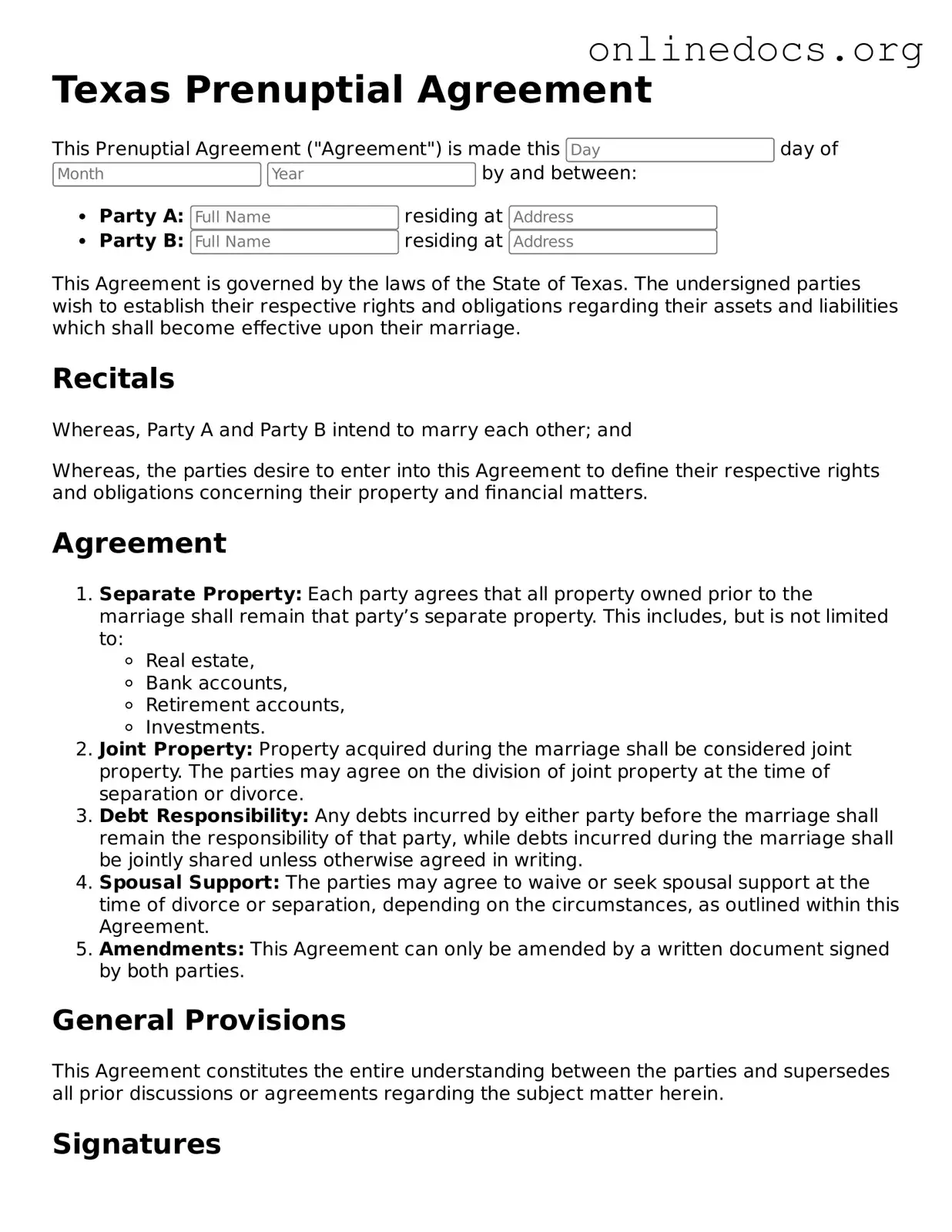Filling out a Texas Prenuptial Agreement form requires careful attention to detail. One common mistake is failing to provide complete and accurate information about assets and debts. When individuals do not fully disclose their financial situation, it can lead to disputes later. Transparency is crucial for the agreement to be valid and enforceable.
Another frequent error is neglecting to have the agreement signed by both parties in the presence of a notary. Without notarization, the document may lack legal standing. This step ensures that both individuals acknowledge their understanding of the terms and are entering into the agreement willingly.
People often overlook the importance of legal counsel when drafting a prenuptial agreement. While it may seem cost-effective to create a DIY document, the complexities of family law can lead to significant issues down the line. Consulting with an attorney can help ensure that the agreement meets all legal requirements and adequately protects both parties' interests.
Additionally, some individuals fail to consider the future. A prenuptial agreement should not only address current assets but also anticipate potential changes, such as the acquisition of new property or the birth of children. Ignoring these factors can render the agreement less effective in the long term.
Another mistake is using vague language in the agreement. Clear and specific terms are essential to avoid misunderstandings. Ambiguities can lead to different interpretations, which may result in legal disputes if the agreement is ever challenged.
Many people also forget to review and update their prenuptial agreement periodically. Life circumstances change, and so should the terms of the agreement. Regular reviews can help ensure that the document remains relevant and reflective of the couple's current situation.
Failing to discuss the prenuptial agreement openly with one’s partner can create tension and mistrust. Honest communication about the reasons for the agreement and its implications is vital. This dialogue can foster a sense of partnership and mutual understanding.
Some individuals mistakenly believe that a prenuptial agreement can cover all future disputes. However, certain matters, such as child custody and support, are typically not enforceable through a prenuptial agreement. Understanding the limitations of the document is important for setting realistic expectations.
Lastly, people may rush through the process of completing the form without taking the necessary time to reflect on their needs and desires. A thoughtful approach can lead to a more comprehensive and fair agreement. Taking the time to carefully consider each provision can ultimately save both parties from potential conflicts in the future.
